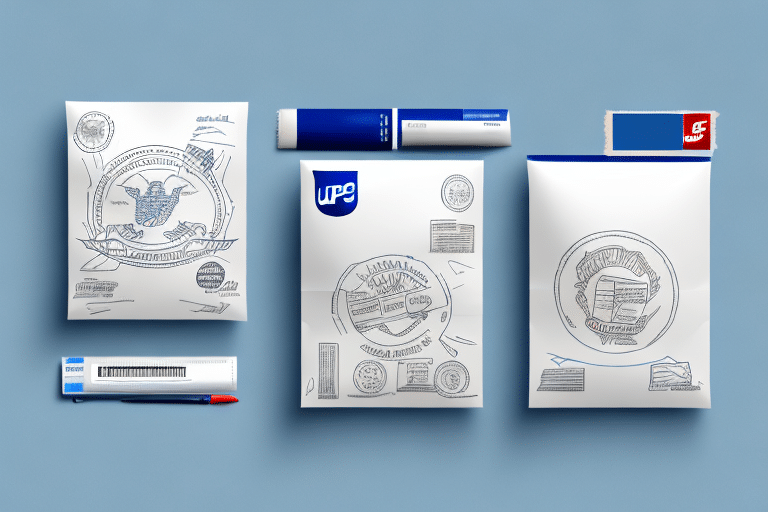Introduction to USPS and UPS Shipping Services
When it comes to shipping packages, USPS and UPS are two of the most prominent carriers in the United States. Both offer a variety of shipping options tailored to different needs, but understanding their differences is crucial for choosing the right service for your requirements. This guide provides an in-depth comparison of USPS and UPS, analyzing delivery times, shipping rates, customer service, and more to help you make an informed decision.
Delivery Times and Reliability
Comparing Delivery Speeds
Delivery speed is a key factor when selecting a shipping service. UPS is renowned for its expedited delivery options. Services like Next Day Air and 2nd Day Air ensure packages arrive swiftly, often within one to two business days. According to [UPS](https://www.ups.com/us/en/services/next-day-air.page), these services are designed for time-sensitive shipments.
On the other hand, USPS offers a range of delivery options, including Priority Mail Express and Priority Mail, which typically deliver within 1-3 business days. While USPS may not always match UPS's expedited services, it provides reliable delivery for most domestic shipments.
Tracking and Delivery Guarantees
Both carriers offer robust tracking systems. UPS provides real-time tracking updates and guarantees delivery dates, backed by their service guarantees. If a package isn't delivered on time, UPS offers refunds on certain services.
USPS also offers tracking for most services, but it primarily provides estimated delivery times rather than guaranteed dates. While USPS does not offer a money-back guarantee like UPS, their tracking system is sufficient for monitoring package status.
Shipping Rates and Cost Efficiency
Comparing Shipping Costs
Shipping costs can vary significantly between USPS and UPS, depending on the package size, weight, and destination. Generally, USPS tends to be more affordable for smaller, lightweight, and domestic packages. For example, USPS's Priority Mail starts at around $8 for small packages.
UPS, conversely, may be more cost-effective for larger or heavier packages. Their pricing structure accounts for the additional handling and faster delivery options they provide. According to [UPS Pricing](https://www.ups.com/us/en/shipping/rates.page), rates vary based on service level, package dimensions, and destination.
International Shipping
When it comes to international shipping, UPS generally offers more extensive coverage and better tracking options compared to USPS. UPS's global network ensures reliable delivery to over 220 countries and territories, with competitive rates for international shipments.
USPS also provides international shipping services, such as Priority Mail International and First-Class Package International, which are often more affordable but may have longer delivery times and limited tracking capabilities.
Customer Service and Support
Effective customer service is essential for resolving shipping issues and ensuring a smooth shipping experience. UPS is known for its exceptional customer service, offering multiple channels for support, including phone, email, and live chat. They provide comprehensive resources for tracking, managing shipments, and resolving disputes.
USPS also offers customer support through various channels, including in-person assistance at post offices, as well as phone and online support. While USPS provides essential customer service, some users report longer wait times compared to UPS.
Cost-Saving Tips for Shipping with USPS and UPS
Utilize Flat-Rate Shipping
USPS offers flat-rate boxes that can be a cost-effective solution for shipping heavy items domestically. Flat-rate pricing allows you to send packages at a fixed price regardless of weight, provided they fit within the designated box sizes.
Leverage Online Discounts
Both USPS and UPS provide discounts for online shipping. Creating an account with [USPS Click-N-Ship](https://www.usps.com/ship/online-shipping.htm) or [UPS My Choice](https://www.ups.com/us/en/services/member-benefits.page) can unlock reduced rates and additional shipping benefits.
Compare Shipping Rates
Before deciding between USPS and UPS, use online shipping calculators to compare rates based on your package's size, weight, and destination. Tools like [UPS Rate Calculator](https://www.ups.com/ratefinder) and [USPS Price Calculator](https://postcalc.usps.com/) can help you identify the most cost-effective option for your specific needs.
Packaging Best Practices
Proper packaging is critical to ensure your items arrive safely and to avoid additional shipping costs. Here are some tips:
- Use Durable Materials: Invest in high-quality boxes and packing materials to protect your items during transit.
- Label Clearly: Ensure that all labels are legible and include both sender and recipient information.
- Seal Securely: Use strong tape to seal all edges and openings of the package.
- Weigh Accurately: Accurately weighing your package can prevent unexpected fees and delays.
Handling Common Shipping Issues
Despite careful planning, shipping issues like delays, lost packages, or damaged items can occur. Here's how to handle them:
Tracking and Monitoring
Regularly monitor your package's status using the tracking tools provided by USPS and UPS. This allows you to identify potential issues early and take proactive measures.
Contact Customer Service
If you encounter problems, reach out to the carrier's customer service. Provide all relevant information, such as tracking numbers and shipment details, to facilitate a swift resolution.
File Claims Promptly
For lost or damaged packages, file a claim as soon as possible. Both USPS and UPS have specific procedures and deadlines for claims, so timely action is essential.
Conclusion: Choosing the Right Carrier for Your Needs
Selecting between USPS and UPS depends on your specific shipping needs, including package size, delivery speed, destination, and budget. By understanding the strengths and limitations of each carrier, you can make an informed decision that ensures your packages are delivered efficiently and cost-effectively.
For more detailed information, visit the official [USPS website](https://www.usps.com/) and [UPS website](https://www.ups.com/) to explore their services and find the best shipping solutions tailored to your requirements.






















